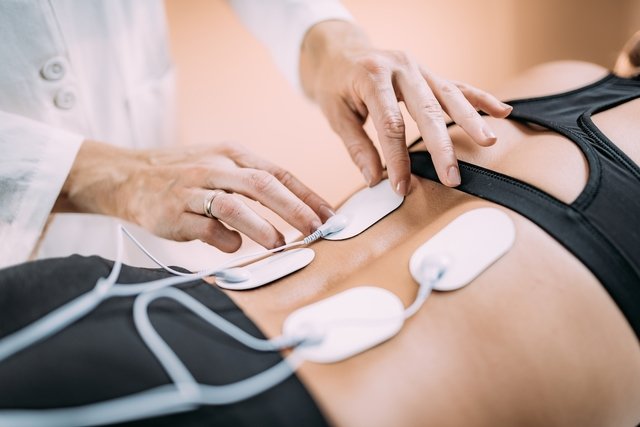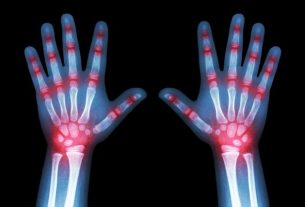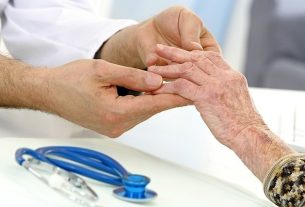TENS is a physiotherapy method that uses electrical impulses to exert analgesic action on the nervous system, helping to treat chronic and/or acute pain, such as low back pain, sciatica or tendonitis, for example.
This type of treatment, also known as “transcutaneous electrical neurostimulation”, works by stimulating sensory nerves, allowing the activation of natural pain control mechanisms and the release of endogenous opioids, such as enkephalin, which has an effect similar to opioid medications.
TENS must be performed by a specialized physiotherapist, using different intensities of electrical impulses, according to the condition being treated.

What is it for
The TENS technique is mainly used to relieve acute and chronic pain, such as:
- Arthritis;
- Pain in the lumbar and/or neck region;
- Sciatica pain;
- Tendinitis;
- Bursitis;
- Dislocation;
- Sprain;
- Epicondylitis;
- Rheumatism;
- Fibromyalgia;
- Neck ache;
- Knee pain;
- Bone pain;
- Diabetic neuropathy;
- Pelvic pain caused by endometriosis;
- Pain after surgery;
- Pain caused by sports injuries;
- Pain caused by cancer.
Therefore, when performing TENS for these situations, it is possible to promote muscle stimulation and vasodilation, which favors the reduction of pain, swelling and the healing of soft tissue injuries.
Is TENS useful for relieving labor pain?
TENS can be used to relieve labor pain, especially low back pain, and is normally indicated when other forms of pain relief have not been effective, such as exercise, massage or breathing and relaxation techniques. See the main ways to alleviate labor pain.
In this way, TENS can be performed by the physiotherapist at any stage of labor, especially at the beginning of labor, and is considered a safe method if applied correctly, and without causing changes to the baby.
Taking care of your health has never been easier!
How it is made
TENS is performed by applying electrodes to the skin, connected to a device that sends electrical impulses, which activate internal control mechanisms of the nervous system, exerting an analgesic action. This is a non-invasive method, which is non-addictive, has no health risks and in most cases does not cause side effects.
Its physiological mechanism of analgesia depends on the modulation of the current applied to the affected region, that is, if low-frequency and high-intensity electrical impulses are applied, endorphins are released by the brain or spinal cord, which are substances with effects similar to morphine, thus leading to to pain relief.
If electrical impulses are applied with high frequency and low intensity, analgesia occurs due to a blockage of nerve pain signals that are not sent to the brain.
The application of TENS lasts around 20 to 40 minutes, depending on the intensity of the stimulus and can be done in an office by a physiotherapist or at home.
When it is not indicated
As it is a treatment method that involves the application of electrical current, performing TENS is not recommended for women who are breastfeeding or for people who have a pacemaker, cardiac arrhythmia, deep vein thrombosis or epileptic disorders.
Furthermore, the application should not be made along the path of the carotid artery or in areas of the skin that have changes due to the disease or changes in sensitivity.
During pregnancy, TENS should not be used in early pregnancy, in women with a history of epilepsy, uterine irritation, a history of miscarriage, or if there are complications in the current pregnancy. Additionally, TENS should not be done on the belly, pelvic area, hands, feet, legs, knees, shoulders, cheeks, or neck.
Bibliography
- NEPHEW, DA; FROM ASSIS, EE The effects of Transcutaneous Electrical Nerve Stimulation (TENS) for pain relief during labor: an integrative review. Course completion work as part of the requirements to obtain the Bachelor’s degree in Physiotherapy, 2021. Centro Universitário UNA Contagem.
- FERNÁNDEZ-TENORIO, E.; et al. Transcutaneous electrical nerve stimulation for spasticity: A systematic review. Neurology (Engl Ed). 34. 7; 451-460, 2019
- NJOGU, A.; et al. The effects of transcutaneous electrical nerve stimulation during the first stage of labor: a randomized controlled trial. BMC Pregnancy Childbirth. 21. 1; 164, 2021
- MOKHTARI, T.; et al. Transcutaneous Electrical Nerve Stimulation in Relieving Neuropathic Pain: Basic Mechanisms and Clinical Applications. Curr Pain Headache Rep. 24. 4; 14, 2020
- WU, LC.; et al. Literature Review and Meta-Analysis of Transcutaneous Electrical Nerve Stimulation in Treating Chronic Back Pain. Reg Anesth Pain Med. 43. 4; 425-433, 2018
- MEGÍA GARCÍA, Á.; et al. Analgesic effects of transcutaneous electrical nerve stimulation (TENS) in patients with fibromyalgia: A systematic review. Attention City Hall. 51. 7; 406-415, 2019
- NHS – OXFORD HEALTH. TENS in pregnancy – Transcutaneous electrical nerve simulation. 2012. Disponível em: <https://www.oxfordhealth.nhs.uk/wp-content/uploads/2014/08/OP-100.15-TENS-machine-in-pregnancy.pdf>. Acesso em 03 mar 2023
- KESKIN, EA; et al. Transcutaneous electrical nerve stimulation improves low back pain during pregnancy. Gynecol Obstet Invest. 74. 1; 76-83, 2012
- JOHNSON, M. I.; et al. Efficacy and safety of transcutaneous electrical nerve stimulation (TENS) for acute and chronic pain in adults: a systematic review and meta-analysis of 381 studies (the meta-TENS study). BMJ Open. 12. 2; e051073, 2022
- MACIEL, Lairton Fabricius M.; FERREIRA, JOSEPH JA; SAINTS, Heleodorius H.; ANDRADE, Palloma R. Effects of Transcutaneous Electrical Nerve Stimulation and Cryotherapy on Pressure-Induced Pain Threshold. Physioter Research. Vol 21. 3 ed; 249-256, 2014

Sign up for our newsletter and stay up to date with exclusive news
that can transform your routine!
Warning: Undefined array key "title" in /home/storelat/public_html/wp-content/plugins/link-whisper-premium/templates/frontend/related-posts.php on line 12
Warning: Undefined array key "title_tag" in /home/storelat/public_html/wp-content/plugins/link-whisper-premium/templates/frontend/related-posts.php on line 13



